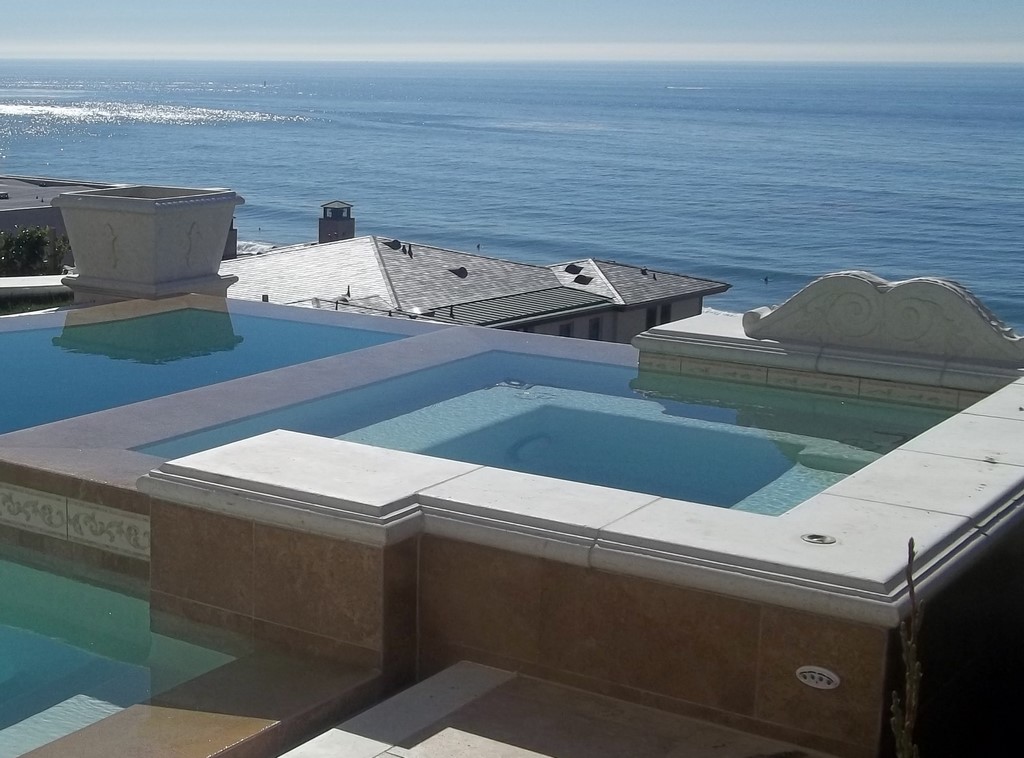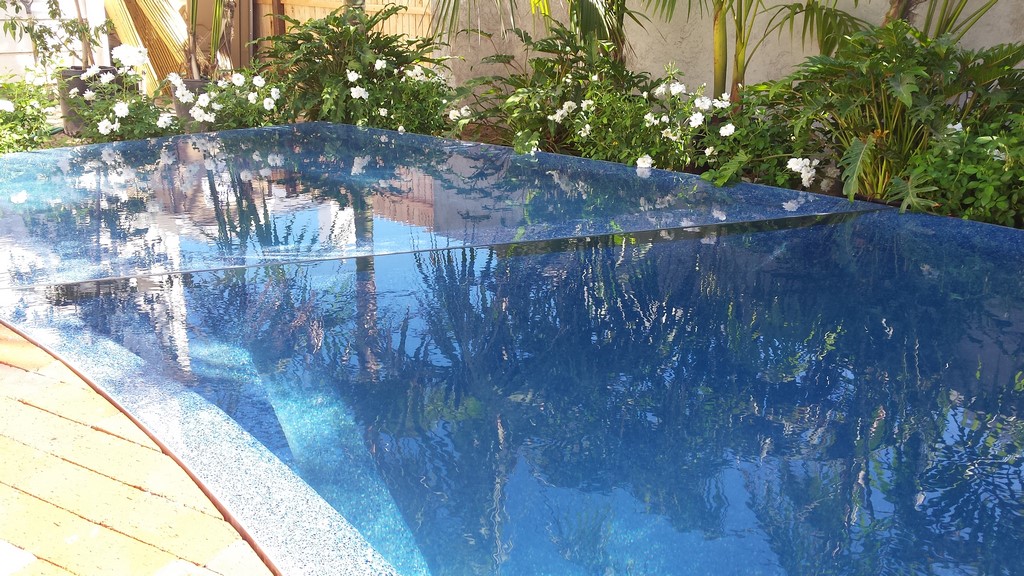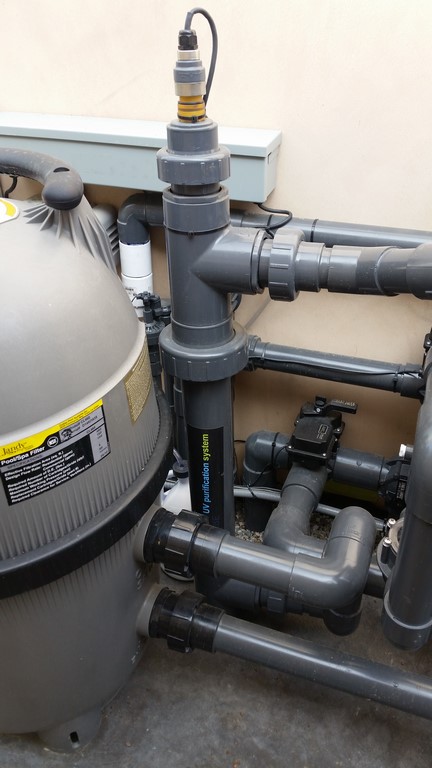Chemical-Free? Really?

It started a couple years ago: More and more often, I was meeting clients who wanted great pools and spas that involved no chemical enhancement – just the water itself.
These were generally people who had studied up. They had rejected dichlor and trichlor and were opposed to any kind of cyanurate presence. They’d considered saltwater pools until they figured out that chlorine was part of the package. They’d looked at ozone and were concerned about its power, and they’d looked at ultraviolet systems and saw that they all recommended using chlorine as a supplementary sanitizer.
They were stuck, but it nonetheless was what they all said they wanted – and I heard from them often enough that I saw an opportunity and wanted to meet their desires as best I could. The result is a system we at Pure Water Pools (Costa Mesa, Calif.) have installed with dozens of projects in the past few years, and it seems to be passing the test of time as a (nearly) chemical-free system.
A FISH TALE
Let me back up a bit. Several years ago, I spent some time learning about the dynamics of koi ponds and was amazed that the water hosting these big fish could be so clear. These ponds were equipped with ultraviolet sanitizing systems that did a good job, but as it turned out, the bio-burden presented by fish waste and slime required a little trick.
The way it worked, I learned, was that the systems operated 24 hours a day so that the ultraviolet system would be as effective as it could be as continuously as possible. In addition, the pond’s circulation system was valved in such a way that a measured portion of the water flowed into the home’s sanitary sewer line each day. To keep the pond at the optimal operating level, this water was simultaneously replenished with fresh tap water, although never in enough volume that the chlorine it carried would bother the fish.
 Lots of bad water out, lots of potable tap water in. It seemed wasteful to me, but I couldn’t argue with the results: The fish were happy, the water was crystal clear and the homeowners lived with the enhanced utility bills without complaint. From then on, I couldn’t get this scheme out of my head and eventually began to think in all-new ways about how we work with pool and spa water.
Lots of bad water out, lots of potable tap water in. It seemed wasteful to me, but I couldn’t argue with the results: The fish were happy, the water was crystal clear and the homeowners lived with the enhanced utility bills without complaint. From then on, I couldn’t get this scheme out of my head and eventually began to think in all-new ways about how we work with pool and spa water.
First, the bio-burden humans bring to pools and spas holding thousands of gallons of water comes nowhere close to the sort of load imposed by a dozen foot-long koi in ponds holding several hundred gallons. Second, and this was important, if we were to leave out all the chemicals and replenish the vessel with fresh tap water on a daily basis, we wouldn’t need to send that only very slightly gray water to a sanitary sewer. Instead, we could divert it to the irrigation system and use it to water the landscape.
Third, and this was even more important, if we ran the circulation system with an adequate ultraviolet system 24 hours a day, the water would turn over frequently enough that algae and bacteria wouldn’t be factors. With ’round-the-clock operation, there would be no need for a cyanurate stabilizer either, because there would be no chlorine component that needed support.
The only contingency we could see that would require chemical addition would be an extra-heavy bather load. In such cases, we theorized, we could add a measure of chlorine late in the evening so it could do its work overnight, when the watershapes weren’t in use. Without cyanurates, the chlorine would be more immediately effective as a sanitizer, and, unstabilized, would begin to vanish into thin air the next day as soon as the sun hit the pool’s surface.
It all started making sense – now we had to figure out what implementing this theory really meant.
GREAT CLARITY
Let me begin by saying that we’ve been installing these chemical-free systems for several years at this point, and the results have exceeded expectations. The water stays in balance without effort, and the only issue we’ve observed is that it can tend to be a little soft because there’s so little by way of accumulated calcium hardness.
Essentially, the water in these vessels is of a quality approaching drinking water, and plants love it just as much as our clients say they do.
 When we began our testing, we tried a variety of ultraviolet sanitizing systems and even tried some ozone units. We ultimately moved away from ozone because we (and our clients) were concerned about the aggressiveness of ozone molecules. We tested a number of ultraviolet units and, through experience, found a unit from SpectraLight Ultraviolet (Georgetown, Texas) that delivered the results we were after.
When we began our testing, we tried a variety of ultraviolet sanitizing systems and even tried some ozone units. We ultimately moved away from ozone because we (and our clients) were concerned about the aggressiveness of ozone molecules. We tested a number of ultraviolet units and, through experience, found a unit from SpectraLight Ultraviolet (Georgetown, Texas) that delivered the results we were after.
The next challenge we faced was covered by the emergence of variable-frequency drive pump motors: These wonderful products make it possible for us to run our systems 24 hours a day at a cost that is roughly equivalent to running the circulation system with a conventional pump for a quarter of that time.
We set our equipment pads up with control systems that run the pump at very low speeds 18 hours a day, then operate at a higher speed for six hours to ensure adequate turnover. It can take some doing to persuade clients that it can almost be less expensive to run the pump all day long – but when we pile it on and start talking about a zero-chemical pool and spa with no expense for chlorine products or cyanurates, they don’t take much convincing.
We also set up small feed systems to add unstabilized liquid chlorine as necessary. During the summer, when the watershape is used most frequently, that dosing might be scheduled daily, with the pump always running, at some point late in the evening. In the winter, it might not be required at all.
A new step in the process has to do with setting up a feed line for the irrigation system. We use pumps designed for use with three-quarter-inch plumbing and include diverter valves to tie a line into the irrigation manifold. The pump is sized to deliver water at the system’s usual line velocity; the sprinklers and drip systems don’t know the difference – and neither do the plants.
INFORMATION GAPS
If there’s a downside to these systems, it’s the constant need we have to persuade the service community to leave well enough alone. I recently visited a spa-only project that was equipped with what we now call our Pure Water System and found a chlorine float bobbing on the water. The plaster finish that had been so white the last time I’d seen it had started turning a soft blue as the chemicals pulled copper from the heat exchanger.
That’s very frustrating, but we do what we can to tell technicians what these watershapes are about – and then hope they stay on the job a while, because we know a new technician will come in, find no stabilizer or chlorine residual and will start tinkering. We can only hope that the change is noticed before the plants and lawns are affected!
The key here is creating a generation of informed, conscientious homeowners (after all, they’re the ones who’ve been asking for these chemical-free pools and spas) who can tell their technicians what to do or put them in contact with us for guidance in caring for these pools and spas. This is working – and we figured it was about time to start talking about the fact that, thoughtfully designed, chemical-free pools are no longer a fantasy.
So far, anyway, so good.
Randy Beard operates Pure Water Pools, a construction/service firm based in Costa Mesa, Calif. He may be reached at rb@purewaterpools.com.










